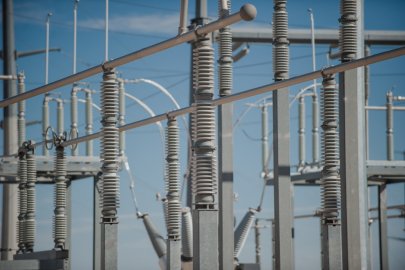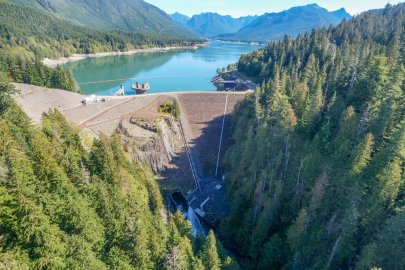A new report outlines current gaps in hydropower testing capabilities in the United States and key improvements needed to expand hydropower technology validation and innovation.
Water Power Technologies Office
March 14, 2024Hydropower Program
Innovations for Low-Impact Hydropower Growth
Project Name: Test Facility for Hydropower and Pumped Storage Technologies (Report)
Project Team: Oak Ridge National Laboratory
Lead Recipient Location: Oak Ridge, Tennessee

In October 2022, Oak Ridge National Laboratory released a report that identifies key improvements needed to expand hydropower testing capabilities in the United States. The report aims to clarify the immediate needs for investment in hydropower testing, identify resources to carry out these improvements, and outline potential barriers that prevent access to testing technologies. This report follows a public request for information and summarizes feedback from hydropower stakeholders on the topic of hydropower testing infrastructure.
The report outlines several thematic challenges in the current testing landscape:
- Access to full-scale testing: Enabling full-scale testing will ultimately accelerate the pathway to commercialization, as operators will be able to more easily validate prototypes for hydropower innovations. These innovations can include upgrades to existing plants, retrofits of non-powered dams, new stream-reach development projects, pumped storage hydropower developments, and innovative hydropower configurations.
- Validation of environmental mitigation technology: Effective environmental mitigation technologies must be introduced and validated to keep pace with environmental performance standards.
- Hydropower flexibility testing: Operators must ensure hydropower’s ability to support other renewables on the evolving electric grid.
- Advanced materials development and testing: Hydropower innovations developed using advanced materials and manufacturing will require new testing and validation procedures.

A new report identifies key improvements that could help expand hydropower testing capabilities in the United States.
In response to the identified opportunities for improvement, the report recommended two complementary overarching initiatives to begin filling these gaps:
- Hydropower testing network: The report proposed the creation of a hydropower testing network that coordinates the capabilities of all existing testing facilities. Cataloging these test facilities and associated capabilities would provide a valuable resource to technology developers looking to validate their designs.
- Full-scale hydropower testing facility: New testing infrastructure could be developed to examine design validation at scale. The facilities should be able to support the validation of environmental metrics and advanced material and manufacturing techniques.
Technological validation is essential for widespread commercialization of innovations that can improve hydropower flexibility and energy storage. Increasing testing capabilities will also speed up the integration of new advanced manufacturing and environmental mitigation technologies. This report outlines ways to enhance the country's hydropower testing capabilities, ultimately helping to improve technology validation and innovation.
-
 A new study and planning tool will help hydropower facility owners prepare and plan to interconnect their facilities to the grid.
A new study and planning tool will help hydropower facility owners prepare and plan to interconnect their facilities to the grid. -
 A national laboratory report examines how advanced manufacturing and materials could benefit the hydropower sector by lowering operation costs and increasing the efficiency of the existing fleet and future facilities.
A national laboratory report examines how advanced manufacturing and materials could benefit the hydropower sector by lowering operation costs and increasing the efficiency of the existing fleet and future facilities. -
 National laboratory researchers released NPD HYDRO, a comprehensive tool that helps users identify and prioritize opportunities to retrofit non-powered dams.
National laboratory researchers released NPD HYDRO, a comprehensive tool that helps users identify and prioritize opportunities to retrofit non-powered dams. -
 A new report outlines current gaps in hydropower testing capabilities in the United States and key improvements needed to expand hydropower technology validation and innovation.
A new report outlines current gaps in hydropower testing capabilities in the United States and key improvements needed to expand hydropower technology validation and innovation.
WPTO's hydropower e-newsletter features news on R&D and applied science to advance sustainable hydropower and pumped-storage technologies.
The WPTO e-newsletter brings funding opportunities, events, publications, & hydropower and marine energy updates directly to your inbox.


